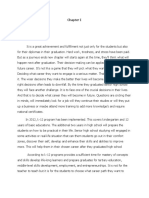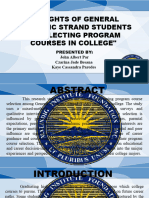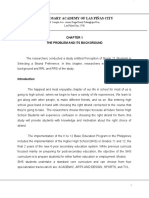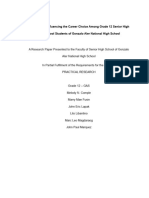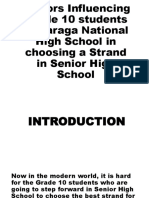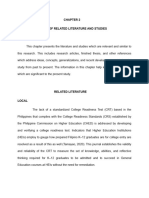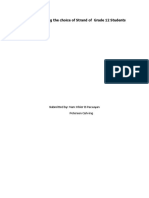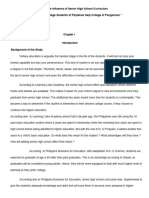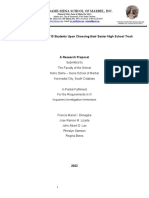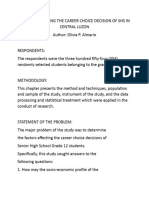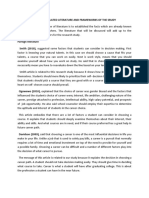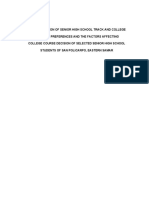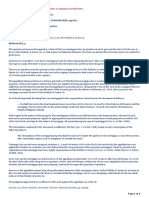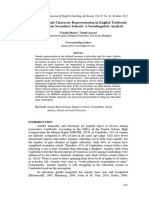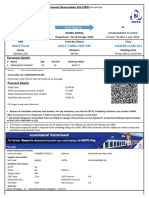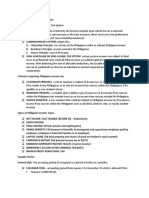0% found this document useful (0 votes)
511 views16 pagesGrade 12 Course Preferences Study
This document presents the introduction and first chapter of a research study on the course preferences of senior high school students in Makapuyat National High School. The study aims to determine the most preferred courses of students overall and by academic strand, as well as the factors influencing their choices. It will survey students to gather data on their preferences and the reasons for those preferences. The results are intended to provide insight for students, teachers, and future researchers on course selection trends.
Uploaded by
ramirezjeanzenCopyright
© © All Rights Reserved
We take content rights seriously. If you suspect this is your content, claim it here.
Available Formats
Download as DOCX, PDF, TXT or read online on Scribd
0% found this document useful (0 votes)
511 views16 pagesGrade 12 Course Preferences Study
This document presents the introduction and first chapter of a research study on the course preferences of senior high school students in Makapuyat National High School. The study aims to determine the most preferred courses of students overall and by academic strand, as well as the factors influencing their choices. It will survey students to gather data on their preferences and the reasons for those preferences. The results are intended to provide insight for students, teachers, and future researchers on course selection trends.
Uploaded by
ramirezjeanzenCopyright
© © All Rights Reserved
We take content rights seriously. If you suspect this is your content, claim it here.
Available Formats
Download as DOCX, PDF, TXT or read online on Scribd
/ 16




